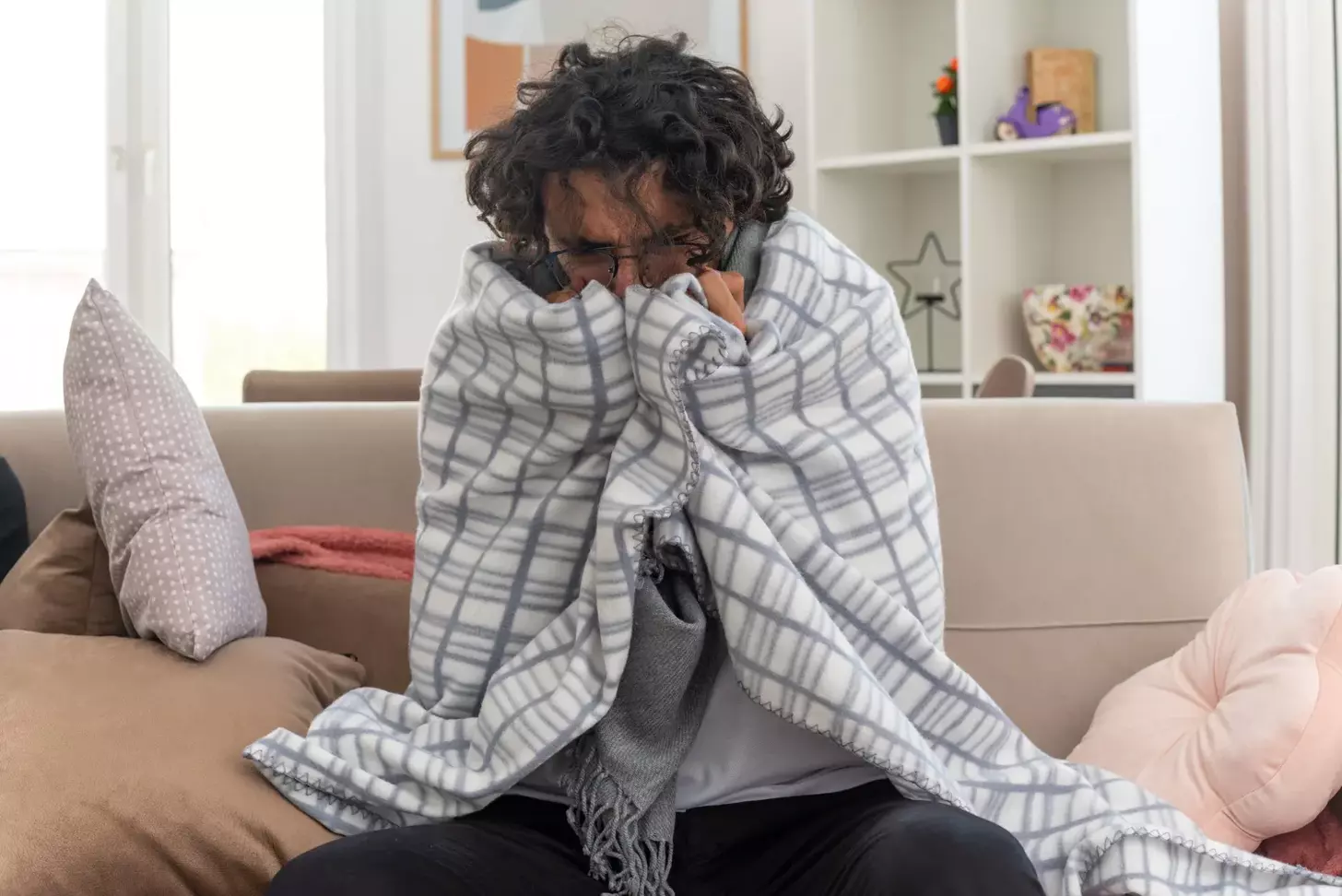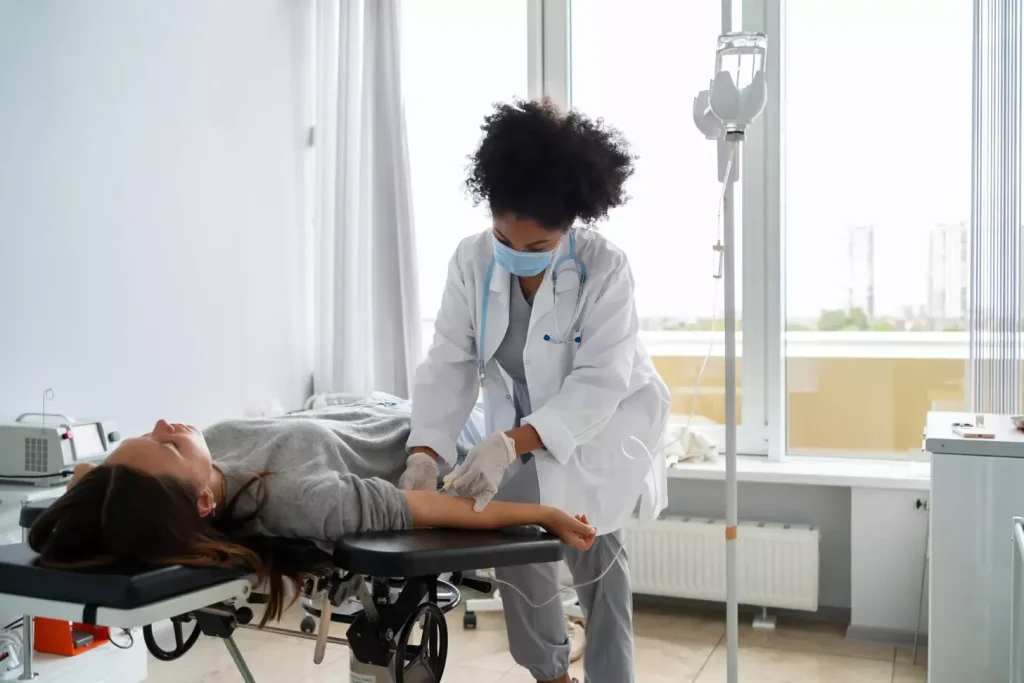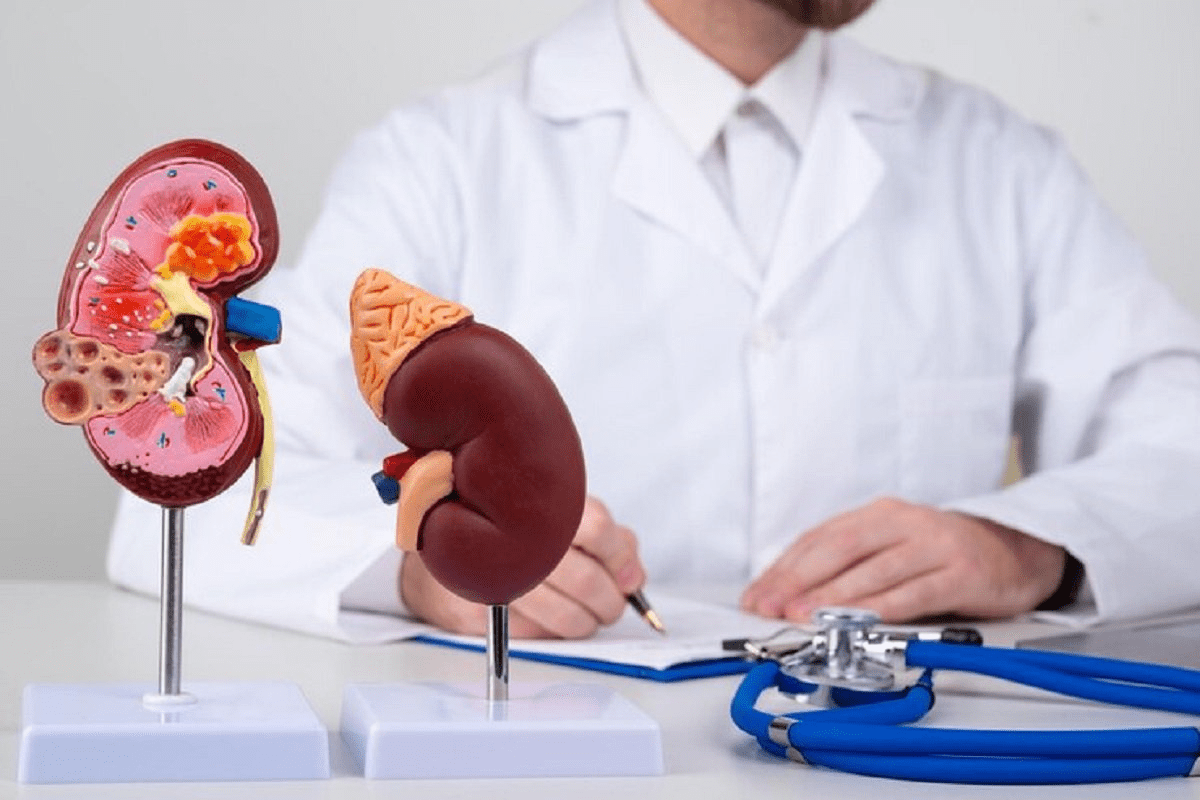Last Updated on November 27, 2025 by Bilal Hasdemir

At Liv Hospital, we understand the importance of navigating the complexities of bladder cancer treatment, including the common side effects associated with BCG therapy. Intravesical BCG therapy is a key treatment for non-muscle invasive bladder cancer (NMIBC). It involves putting BCG into the bladder through a catheter to fight cancer cells.
Understanding the side effects of this therapy is key for effective patient care. As a trusted healthcare provider, we make sure our patients are well-informed and supported. We address their concerns about intravesical therapy and its effects.
BCG therapy is effective but can cause various side effects. Some are common, while others are less common. Knowing about these side effects helps healthcare providers offer better support and management strategies. This is for patients going through bladder cancer chemotherapy wash and other treatments.
Key Takeaways
- BCG therapy is a key treatment for non-muscle invasive bladder cancer.
- Understanding BCG side effects is essential for effective patient care.
- Intravesical therapy involves instilling BCG into the bladder through a catheter.
- Common BCG side effects can vary in severity and impact on patients.
- Liv Hospital provides complete support to patients throughout their treatment journey.
Understanding BCG Therapy for Bladder Cancer
BCG therapy is a key treatment for bladder cancer. It uses the body’s immune system to fight cancer. This method is very effective for non-muscle invasive bladder cancer.
What is BCG Treatment?
BCG treatment uses a weakened tuberculosis bacterium in the bladder. It’s given through a catheter. This helps the immune system attack bladder cancer cells. Intravesical BCG therapy targets cancer in the bladder, reducing side effects.
How Intravesical BCG Works Against Bladder Cancer
BCG treatment starts an immune response against bladder cancer. When BCG is put in the bladder, it causes a local infection. This infection brings immune cells to fight cancer cells in the bladder lining.
This method not only kills cancer cells but also stops cancer from coming back.
“The use of BCG in bladder cancer treatment has shown significant promise in reducing recurrence rates and improving patient outcomes,” says a leading urologist. Organizations like Liv Hospital emphasize the importance of patient-centered approaches in managing BCG side effects.
The Administration Process and Treatment Schedule
BCG treatment starts a few weeks after tumor removal. It includes weekly instillations for 6 weeks, followed by maintenance therapy. Maintenance therapy may include more instillations at 3, 6, and 12 months, and possibly more after that.
| Treatment Phase | Schedule | Frequency |
|---|---|---|
| Initial Treatment | Weekly for 6 weeks | Once a week |
| Maintenance Therapy | 3, 6, and 12 months | Once at each interval |
The treatment schedule can change based on the patient’s risk and how they respond. It’s important for patients to follow the recommended schedule for the best results.
Urinary Frequency and Urgency
Patients getting BCG therapy often notice changes in how often they need to pee. They might feel a strong need to pee too. These are common side effects of BCG treatment. They can really affect daily life.
Why BCG Causes Urinary Changes
BCG therapy makes the bladder react, leading to irritation and swelling. This is meant to fight cancer cells. But it can make the bladder smaller and more sensitive, causing more trips to the bathroom.
Typical Duration and Severity
How long and how bad these symptoms are can differ from person to person. They usually start during or right after treatment. They can last for weeks after BCG therapy ends. For more on handling these side effects, check out managing side effects of bladder cancer.
| Symptom | Typical Duration | Severity Level |
|---|---|---|
| Urinary Frequency | Several weeks post-treatment | Moderate to Severe |
| Urgency | Several weeks post-treatment | Moderate to Severe |
Management Strategies for Daily Activities
Managing BCG side effects is key to keeping a good quality of life. There are ways to deal with needing to pee a lot and feeling a strong urge to pee. Here are a few:
- Fluid management: Drinking less, like before bed, can cut down on nighttime trips.
- Bladder training: Slowly getting better at holding pee can help the bladder hold more.
- Avoiding irritants: Cutting down on caffeine and spicy foods can lessen bladder irritation.
Knowing why these symptoms happen and using these tips can help patients deal with them. This makes BCG therapy easier to handle.
Cystitis and Bladder Pain
BCG therapy can cause cystitis, which affects a patient’s life quality. Cystitis is bladder inflammation leading to painful urination and frequent need to urinate. It’s important for patients to know about BCG-induced cystitis symptoms, causes, and how to manage it.
Symptoms of BCG-Induced Cystitis
The symptoms of BCG-induced cystitis can be severe. They include painful urination, increased urinary frequency, and urgency. Some may also feel dysuria, or pain while urinating, and notice changes in urine color or smell. These symptoms come from the body’s immune reaction to the BCG vaccine, aimed at cancer cells in the bladder.
Differentiating from Urinary Tract Infections
It’s key to tell BCG-induced cystitis apart from urinary tract infections (UTIs). Both can cause similar symptoms like dysuria and frequency. But UTIs are usually due to bacteria. BCG-induced cystitis is from the immune response to the BCG therapy. Tests like urine cultures can help figure out the cause.
Relief Measures for Bladder Discomfort
There are ways to ease the discomfort of BCG-induced cystitis. Drinking plenty of water helps flush the bladder. Taking pain management meds can also help. Avoiding irritants like spicy foods or caffeine is another good step. Sometimes, doctors may suggest treatments to calm the bladder lining and lessen inflammation.
Hematuria (Blood in Urine)
BCG therapy is good against bladder cancer but can cause blood in the urine. This happens because BCG irritates the bladder lining.
Causes of BCG-Related Hematuria
When BCG is put into the bladder, it starts an immune response. This can make the bladder lining inflamed and irritated. This irritation is why some people get blood in their urine during BCG therapy.
Severity Levels and Expected Duration
The blood in urine from BCG therapy can be tiny or very noticeable. Most of the time, it’s not too bad and goes away in a few days or weeks. But sometimes, it can last longer and need more checking.
How long and how bad the blood in urine is can depend on a few things. These include how much BCG is used, how often it’s used, and the person’s health and bladder condition.
When Hematuria Requires Medical Attention
Even though blood in urine from BCG therapy is usually not serious, there are times when it needs quick medical help. You should get help right away if you have:
- Heavy bleeding that doesn’t stop
- Blood in urine that lasts longer than expected
- Severe pain or trouble peeing
- Fever or chills with blood in urine
It’s important for patients to watch their symptoms closely. If anything seems off, they should tell their doctor right away. This way, any serious problems can be caught and treated quickly.
Understanding Common BCG Side Effects: Fever and Flu-like Symptoms
BCG therapy can cause fever and flu-like symptoms in some people. These happen because the body reacts to the treatment.
Systemic Inflammatory Response Mechanisms
BCG therapy makes the body fight cancer cells in the bladder. This fight can cause flu-like symptoms like fever, chills, and tiredness.
The body’s immune response is complex. It involves many cells and substances. Sometimes, this response spreads, causing flu-like symptoms.
Temperature Monitoring Guidelines
It’s key to watch body temperature during BCG therapy, as fever is a common side effect. Patients should check their temperature often, after each treatment.
If the fever goes over 101 °F (38.3 °C), patients should call their doctor. It’s also important to report how long the fever lasts and any other symptoms.
| Temperature Range | Action Required |
|---|---|
| Less than 100.4 °F (38 °C) | Monitor temperature; maintain hydration |
| 100.4 °F – 101 °F (38 °C – 38.3 °C) | Contact healthcare provider if persists |
| Greater than 101 °F (38.3 °C) | Seek immediate medical attention |
Medication Options for Symptom Relief
Healthcare providers might suggest over-the-counter drugs like acetaminophen or ibuprofen for fever and flu-like symptoms. These can help ease discomfort and lower fever.
It’s important to follow the dosage instructions and talk to a doctor before taking any medication. This is true if you have other health issues or are on other medicines.
- Acetaminophen: Helps with fever reduction and pain relief
- Ibuprofen: Reduces fever and inflammation; also provides pain relief
Understanding the reasons for fever and flu-like symptoms from BCG therapy helps patients manage their treatment better.
Fatigue and Malaise After BCG Treatment
BCG therapy can cause fatigue and malaise. These symptoms can be tough for patients with bladder cancer. They can really affect how well you live.
Energy Depletion Patterns
Patients feel energy levels drop during treatment. Some feel tired right after, while others notice it a few days later. Keep an eye on your energy to find what works for you.
Things like how your body reacts to BCG, infections, and stress can lower your energy. Listen to your body and rest when needed. This helps manage fatigue better.
Duration and Recovery Timeline
How long you feel tired and run down varies. It depends on how many treatments you have and your health. Symptoms can last from days to weeks after treatment ends.
- Most start feeling better a few weeks after BCG therapy.
- Some take longer, based on their health and other conditions.
- Keep up with your doctor to track your recovery and solve any issues.
Lifestyle Adjustments During Treatment Cycles
Changing your lifestyle can help fight fatigue and malaise. Focus on eating well, staying hydrated, and gentle exercise if you can.
“Rest is not idleness, and to lie sometimes on the grass under trees on a summer’s day, listening simply to the wind, is perhaps the most efficient way to the repair of those bruised feelings and tired nerves that make for the greatest part of our civilization.”
Small changes can make a big difference:
- Make rest and sleep a priority to help your body heal.
- Do light activities, like short walks, to stay active.
- Eat foods full of fruits, veggies, and whole grains to support your health.
Understanding and managing fatigue and malaise can improve your life during and after BCG treatment. We’re here to support you every step of the way.
Granulomatous Prostatitis and Genital Complications
BCG therapy is good for bladder cancer but can cause problems in men. One issue is granulomatous prostatitis, which makes the prostate gland inflamed. This is a big worry for men getting BCG treatment.
Male-Specific BCG Complications
Men getting BCG therapy might face genital issues. Granulomatous prostatitis is a big concern, as it forms granulomas in the prostate. Other problems include epididymitis and orchitis, which are inflammation in the epididymis and testes.
Diagnostic Approaches
Doctors use a few ways to find out if a man has granulomatous prostatitis or other genital issues. They start with a detailed medical history and physical check-up. Then, they might do:
- Prostate-specific antigen (PSA) testing to check for prostate inflammation
- Urine analysis to look for signs of infection or inflammation
- Imaging studies, like ultrasound or MRI, to see the prostate and nearby areas
Treatment and Management Options
Treating granulomatous prostatitis and other BCG therapy-related genital issues depends on how bad it is. Mild cases might just need pain relief and anti-inflammatory drugs. But, severe cases might need more specific treatments, such as:
| Treatment Approach | Description |
|---|---|
| Antibiotics | Used to treat secondary infections that may arise |
| Corticosteroids | Prescribed to reduce inflammation in severe cases |
| Supportive Care | Includes pain management and monitoring |
In summary, while granulomatous prostatitis and other genital issues are risks with BCG therapy, quick diagnosis and right treatment can lessen these problems. This helps men get the best results from their treatment.
Severe BCG Side Effects: Sepsis and Systemic Infection
Sepsis and systemic infection are serious and potentially fatal complications of BCG therapy for bladder cancer. These severe side effects are rare but need quick recognition and treatment. We will talk about the warning signs, emergency actions, and how to prevent these issues, mainly in high-risk patients.
Recognizing Warning Signs of BCG Infection
It’s important to spot the warning signs of BCG infection early. Symptoms include:
- High fever that lasts or comes with chills
- Severe fatigue and feeling unwell
- Confusion or feeling mentally off
- Rapid heart rate and trouble breathing
If you’re experiencing these symptoms, get medical help right away. Early action can make a big difference.
Emergency Interventions and Hospitalization
When sepsis or systemic infection from BCG therapy is suspected, quick action is key. This might include:
- Immediate hospitalization for close watch and treatment
- Antibiotic therapy to fight the infection
- Supportive care like fluids and oxygen
Quick treatment can lessen the severity of these issues and better patient results.
Prevention Strategies for High-Risk Patients
To prevent severe BCG side effects in high-risk patients, careful selection and monitoring are needed. Strategies include:
- Thorough pre-treatment screening to find high-risk patients
- Dose adjustment or different treatments for those at risk
- Close monitoring during and after treatment for early signs of problems
By using these strategies, healthcare providers can lower the risk of severe side effects and ensure safer treatment results.
Conclusion: Balancing BCG Benefits and Side Effects
BCG therapy is a key treatment for non-muscle invasive bladder cancer (NMIBC). It helps lower the chance of cancer coming back and spreading. But, it can also cause side effects that affect a patient’s life quality.
We stress the need for patient-centered care to handle these side effects. Knowing about BCG’s side effects, like frequent urination, bladder issues, and blood in urine, helps doctors find ways to lessen them.
To reduce BCG side effects, we need a detailed plan. This includes watching patients closely, teaching them about their treatment, and acting quickly when needed. This way, we can make sure BCG therapy works well for each patient, balancing its good points with possible downsides.
In the end, focusing on the patient is key. It makes sure BCG therapy is given safely and works best, with fewer side effects.
What is BCG therapy, and how is it used to treat bladder cancer?
BCG therapy is a treatment for bladder cancer. It uses a weakened form of tuberculosis bacteria. This is put into the bladder to help the immune system fight cancer.
What are the common side effects of BCG therapy?
Side effects include frequent need to urinate and bladder irritation. You might also feel feverish, tired, or have flu-like symptoms. Some men may experience prostate issues.
How long do BCG side effects typically last?
Side effects vary by person and symptom. Some, like needing to urinate often, may go away in days. Others, like feeling tired, can last weeks.
How can I manage urinary frequency and urgency caused by BCG therapy?
To help, drink less before bed and avoid caffeine and spicy foods. Try relaxation techniques like deep breathing or meditation.
What is the difference between BCG-induced cystitis and a urinary tract infection?
BCG-induced cystitis is inflammation from BCG therapy. A urinary tract infection is a bacterial infection needing antibiotics. A doctor can tell the difference with tests.
When should I seek medical attention for hematuria (blood in urine) after BCG therapy?
See a doctor for heavy bleeding, clots, or lasting blood in urine. Also, report severe pain or trouble urinating.
How can I manage fever and flu-like symptoms caused by BCG therapy?
Use over-the-counter pain relievers and drink lots of water. Rest and avoid hard activities.
What are the risks of severe BCG side effects, such as sepsis or systemic infection?
Severe side effects like sepsis are rare but serious. Watch for high fever, chills, or trouble breathing. Seek help right away if you see these signs.
How can I minimize the risk of BCG side effects?
Follow your treatment plan and report any issues to your doctor. Stay hydrated during and after treatment.
What is granulomatous prostatitis, and how is it treated?
It’s a rare prostate issue from BCG therapy in men. Treatment often includes anti-inflammatory drugs. Sometimes, antibiotics or other steps are needed.
Can I continue with my daily activities during BCG treatment?
Yes, most people can keep up with daily life. You might need to adjust to manage side effects, like taking breaks or avoiding hard activities.
How is BCG therapy administered, and what is the typical treatment schedule?
BCG is given through a catheter into the bladder. The schedule usually includes weekly treatments for several weeks, followed by maintenance therapy.








